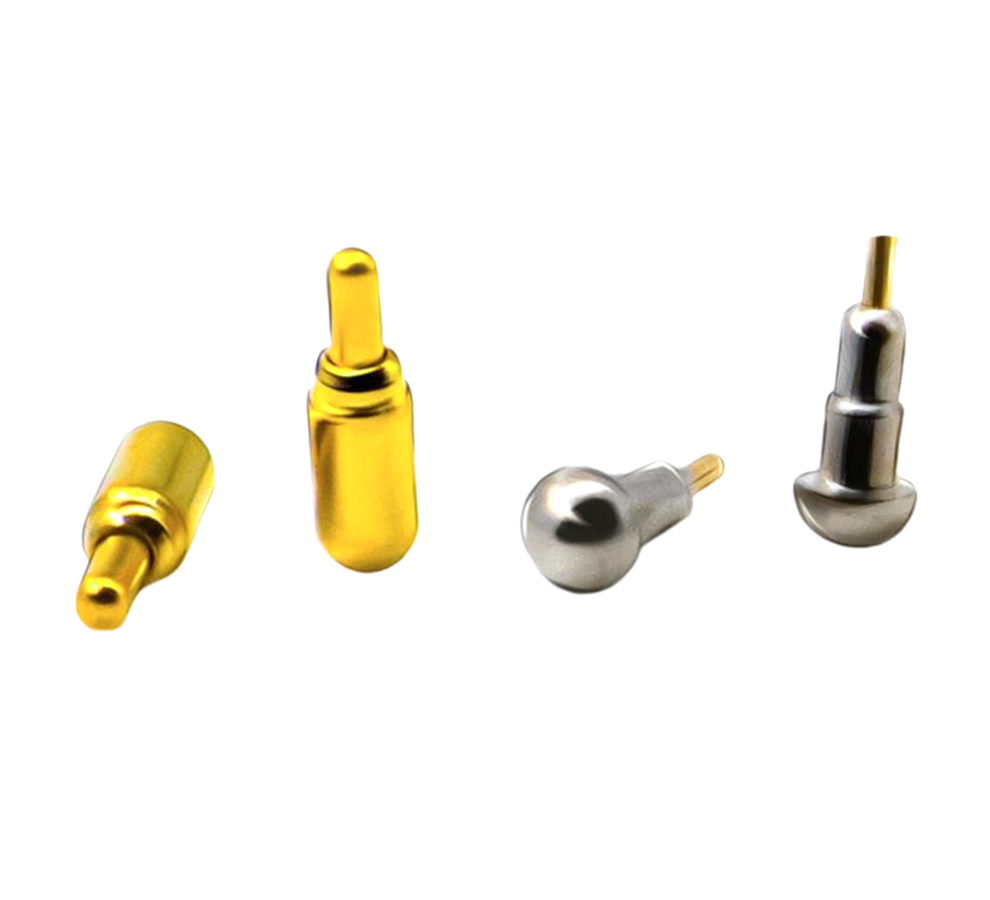Time:2025-05-09 Views:1 source:News

The connection structure of Pogo pins is a well - engineered design that enables reliable electrical connections in a variety of applications, especially in the realm of modern electronics. This structure is composed of several key components, each playing a vital role in ensuring seamless connectivity.
At the core of the Pogo pin connection structure are the three main elements: the plunger, the spring, and the barrel. The plunger is the part that makes direct contact with the mating surface, whether it be a charging terminal on a device, a contact pad on a printed circuit board (PCB), or another electrical component. It is typically made from materials with excellent electrical conductivity, such as brass or phosphor bronze, which are often plated with a thin layer of nickel or gold. This plating not only enhances the electrical performance but also provides corrosion resistance, ensuring long - term reliability of the connection.
The barrel serves as the housing for the plunger and the spring. It provides structural support and maintains the alignment of the plunger, preventing it from moving erratically. The barrel is usually made of a conductive material as well, often brass or copper, and is designed to be robust enough to withstand the mechanical stresses associated with repeated connections and disconnections. In some cases, the barrel may also have additional features, such as flanges or grooves, to facilitate its installation or to improve its mechanical stability within a larger connector assembly.
The spring is a crucial component that provides the necessary force to push the plunger towards the mating surface. Made from materials like stainless steel or beryllium copper, the spring is designed to have a specific spring constant. This constant determines the amount of force exerted by the spring, which is carefully calibrated to ensure a secure connection without causing excessive wear or damage to the mating surfaces. When a Pogo pin is pressed against a target contact, the spring compresses, allowing the plunger to make contact. The spring force ensures that the plunger maintains continuous contact, even if there is some movement or misalignment between the two connected components.
In a typical application, such as a tablet connecting to a charging dock, the Pogo pins on the tablet are designed to align with corresponding Pogo pins or contact pads on the dock. The magnetic alignment may be incorporated in some designs to assist in the connection process. Magnets can be placed either in the Pogo pins themselves or in the surrounding housing of the connector. These magnets help guide the tablet into the correct position, making it easier for the Pogo pins to make contact. Once the pins are in place, the spring - loaded plungers push against the mating contacts, establishing an electrical connection. This connection allows for the transfer of power, data, or both, depending on the application. The connection structure of Pogo pins is highly versatile and can be adapted to different sizes, current - carrying capacities, and environmental conditions, making them suitable for a wide range of electronic devices, from small wearables to large industrial equipment.
Read recommendations:
Battery interface Pogo Pin Connector